
Playa del Carmen: A Vibrant Jewel in Cozumel's Crown
Discover the charm of Playa del Carmen, a lively neighborhood in Cozumel, Mexico, known for its stunning beaches, vibrant nightlife, and rich cultural heritage.
Playa del Carmen, nestled in the heart of the Riviera Maya, is a vibrant and cosmopolitan destination that attracts tourists from all over the world. Renowned for its stunning beaches, crystal-clear turquoise waters, and a lively atmosphere, this neighborhood offers a perfect blend of relaxation and adventure. Stroll down the famous Quinta Avenida (Fifth Avenue), a bustling pedestrian street lined with an array of shops, boutiques, restaurants, and bars. Here, you can indulge in local cuisine, sip on refreshing cocktails, and shop for unique souvenirs and artisan crafts. The street comes alive at night, with live music and entertainment that keep the energy high. For those seeking natural beauty, Playa del Carmen does not disappoint. The pristine beaches are perfect for sunbathing, swimming, and water sports. Nearby, you can explore the ancient ruins of Tulum or venture into the lush jungles for an exhilarating zip-lining experience. The Great Maya Reef, the second largest coral reef system in the world, offers incredible snorkeling and diving opportunities. Playa del Carmen is also a gateway to other attractions in the region. Take a ferry to the island of Cozumel for a day trip, or explore the cenotes, natural sinkholes filled with freshwater, scattered throughout the Yucatán Peninsula. Whether you're a history buff, adventure seeker, or beach lover, Playa del Carmen has something for everyone.
Local tips in Playa del Carmen
- Visit early in the morning to enjoy quieter beaches and attractions.
- Bring comfortable walking shoes for exploring Quinta Avenida.
- Don't forget to haggle at local markets for the best prices.
- Try local delicacies like tacos al pastor and fresh ceviche.
- Carry cash as some smaller vendors may not accept credit cards.
Playa del Carmen: A Vibrant Jewel in Cozumel's Crown
Playa del Carmen, nestled in the heart of the Riviera Maya, is a vibrant and cosmopolitan destination that attracts tourists from all over the world. Renowned for its stunning beaches, crystal-clear turquoise waters, and a lively atmosphere, this neighborhood offers a perfect blend of relaxation and adventure. Stroll down the famous Quinta Avenida (Fifth Avenue), a bustling pedestrian street lined with an array of shops, boutiques, restaurants, and bars. Here, you can indulge in local cuisine, sip on refreshing cocktails, and shop for unique souvenirs and artisan crafts. The street comes alive at night, with live music and entertainment that keep the energy high. For those seeking natural beauty, Playa del Carmen does not disappoint. The pristine beaches are perfect for sunbathing, swimming, and water sports. Nearby, you can explore the ancient ruins of Tulum or venture into the lush jungles for an exhilarating zip-lining experience. The Great Maya Reef, the second largest coral reef system in the world, offers incredible snorkeling and diving opportunities. Playa del Carmen is also a gateway to other attractions in the region. Take a ferry to the island of Cozumel for a day trip, or explore the cenotes, natural sinkholes filled with freshwater, scattered throughout the Yucatán Peninsula. Whether you're a history buff, adventure seeker, or beach lover, Playa del Carmen has something for everyone.
Iconic landmarks you can’t miss
Playa Mia Grand Beach Park
Experience the ultimate beach getaway at Playa Mia Grand Beach Park, Cozumel's premier destination for sun, fun, and relaxation.

Chankanaab Beach Adventure Park
Discover the beauty of Chankanaab Beach Adventure Park in Cozumel, where adventure meets relaxation in a stunning tropical setting.

Punta Sur Eco Beach Park
Explore Punta Sur Eco Beach Park: A natural paradise in Cozumel with pristine beaches, diverse wildlife, and breathtaking views.

El Mirador
Discover the breathtaking views and serene atmosphere at El Mirador, Quintana Roo's premier scenic spot for nature lovers and photographers.
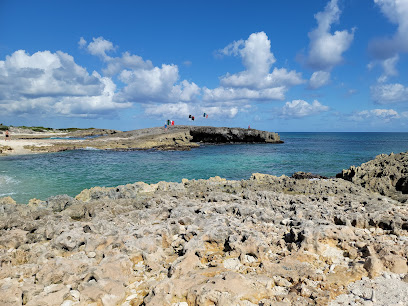
Coral Reefs Monument
Explore the Coral Reefs Monument in Cozumel, a stunning tribute to the vibrant marine life and a perfect spot for photography and relaxation.
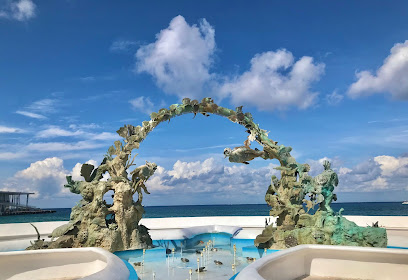
Zona Arqueológica El Caracol
Explore the ancient Mayan ruins of Zona Arqueológica El Caracol in Punta Sur, Cozumel, and immerse yourself in history surrounded by natural beauty.

Castillo Real
Experience the majestic beauty and rich history of Castillo Real in San Miguel de Cozumel, a top tourist attraction showcasing stunning architecture and cultural heritage.

Dr. Adolfo Rosado Salas Monument
Explore the Dr. Adolfo Rosado Salas Monument in Cozumel, a cultural landmark celebrating local heritage amid vibrant scenery.

Mexican War Memorial
Explore the Mexican War Memorial in Cozumel, a poignant tribute to bravery, surrounded by lush gardens and rich local culture.

Cozumel Mexico
Explore the tropical paradise of Cozumel, Mexico, where stunning beaches, vibrant marine life, and rich culture await every traveler.

Unmissable attractions to see
Chankanaab Beach Adventure Park
Explore Chankanaab Beach Adventure Park in Cozumel for a fun-filled day of adventure, relaxation, and vibrant marine life amid stunning tropical landscapes.

Benito Juarez Park
Discover the tranquility of Benito Juarez Park, a lush green retreat in Cozumel featuring vibrant flora and a peaceful atmosphere perfect for relaxation.

Dolphin Discovery Cozumel
Experience the thrill of swimming with dolphins at Dolphin Discovery Cozumel, a unique marine adventure in the heart of the Caribbean.

Isla de la Pasión
Discover Isla de la Pasión: A serene haven with stunning beaches and vibrant marine life, perfect for relaxation and adventure in Cozumel.
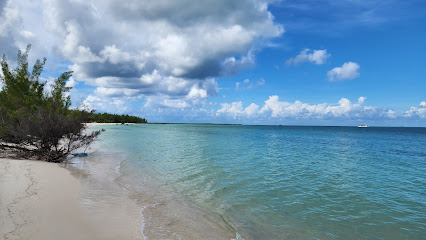
Museo Frida Kahlo Playa Del Carmen
Explore the vibrant life and art of Frida Kahlo at Museo Frida Kahlo in Playa Del Carmen, a unique cultural experience in the heart of the Caribbean.
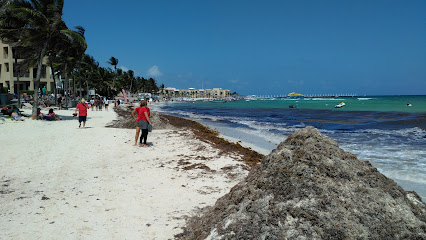
Discover Mexico Park Cozumel
Explore the rich heritage of Mexico at Discover Mexico Park in Cozumel, where culture, art, and culinary delights come together in a vibrant theme park experience.

Castillo Real
Discover the enchanting Castillo Real, a stunning tourist attraction in Cozumel offering rich history and breathtaking views of the Caribbean Sea.

Essential places to dine
La Choza Cozumel
Experience authentic Mexican cuisine in a vibrant setting at La Choza Cozumel – perfect for breakfast lovers seeking local flavors.

Alux Restaurant Bar and Lounge
Experience exquisite dining in Playa del Carmen's enchanting cave setting at Alux Restaurant Bar and Lounge – where flavor meets ambiance.
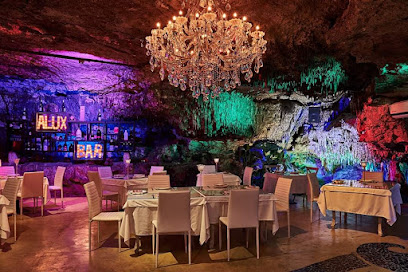
100% Natural Playa del Carmen
Savor fresh and healthy meals at 100% Natural Playa del Carmen - where nutrition meets flavor in every bite.

La Monina
Experience authentic Mexican flavors at La Monina in Cozumel – where every meal is a celebration of taste and culture.

La Parrilla Playa del Carmen
Savor authentic Mexican cuisine at La Parrilla Playa del Carmen, famous for its tantalizing tacos and grilled delights in a festive atmosphere.

La Cocay
Experience exquisite Mediterranean flavors at La Cocay in Cozumel - where every meal is a journey through Italy's culinary treasures.

Trujillos Cantina De Selva
Savor the essence of Mexico at Trujillos Cantina De Selva with authentic dishes and a vibrant atmosphere in Playa del Carmen.

Le Chef Cozumel
Discover culinary excellence at Le Chef Cozumel, where fine dining meets Caribbean charm through exquisite continental and seafood dishes.

Three Amigos Cozumel
Discover the vibrant flavors of Tex-Mex at Three Amigos Cozumel - where delicious food meets Caribbean charm.

La casita de Indio 333
Experience authentic Mexican flavors at La Casita de Indio 333 - where fresh seafood meets traditional cuisine in San Miguel de Cozumel.

Markets, malls and hidden boutiques
Paseo del Carmen Shopping Mall
Explore the vibrant Paseo del Carmen Shopping Mall in Playa del Carmen, offering a unique blend of shopping, dining, and entertainment in a tropical setting.

Calle Corazón
Discover the vibrant shopping and dining scene at Calle Corazón, the heart of Playa del Carmen, where local culture meets modern retail.

Plaza Punta Langosta
Experience the best of shopping, dining, and entertainment at Plaza Punta Langosta in Cozumel, a vibrant hub for tourists and locals alike.

Royal Village Shopping Center
Explore the Royal Village Shopping Center in Cozumel for a vibrant shopping experience filled with local charm, delicious cuisine, and unique treasures.

Souvenirs Playa
Discover the essence of Playa del Carmen at Souvenirs Playa, where every treasure tells a story and every purchase is a piece of Mexico.

The Five Suns
Explore The Five Suns in Cozumel for exquisite souvenirs, boutique clothing, and handcrafted treasures that embody the spirit of Mexico.

Mayan Plaza
Explore Mayan Plaza, Cozumel's vibrant shopping mall offering unique local crafts, delicious dining, and an authentic taste of Mexican culture.
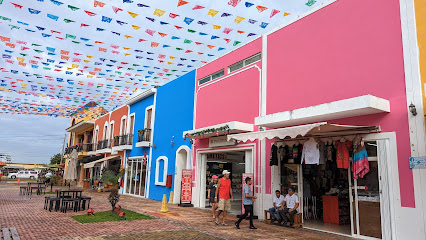
Sergio's Silver From Taxco
Explore the finest Taxco silver jewelry at Sergio's Silver in Cozumel, where craftsmanship meets charm, offering unique treasures for every traveler.

Rosalia Textiles Mayas
Explore the vibrant and colorful world of traditional Mayan textiles at Rosalia Textiles Mayas in Playa del Carmen.

Black Coral Gallery
Explore Black Coral Gallery in Cozumel for exquisite handcrafted jewelry and unique local crafts celebrating the vibrant culture of the Yucatan Peninsula.

Le Best
Explore the vibrant heart of Playa del Carmen at Le Best, where unique handcrafted goods and stylish clothing await every traveler.

Plaza Confetti
Discover the vibrant culture of Cozumel at Plaza Confetti, where local crafts, adventure, and unique experiences await every traveler.

La Troupe Playa del Carmen
Discover unique coastal fashion at La Troupe Playa del Carmen, a chic boutique on Quinta Avenida that captures the essence of vibrant beach life.

Panama Jack Resorts Playa del Carmen Gift shop
Explore the Panama Jack Resorts Playa del Carmen Gift Shop for unique souvenirs, local crafts, and resort-branded merchandise to remember your getaway.

Essential bars & hidden hideouts
Mamita's Beach Club
Discover the vibrant Mamita's Beach Club in Playa del Carmen, where culinary delights and stunning beach views create an unforgettable experience.

Fah
Discover Fah, where vibrant flavors and a lively atmosphere meet in the heart of Playa del Carmen, perfect for a memorable dining experience.
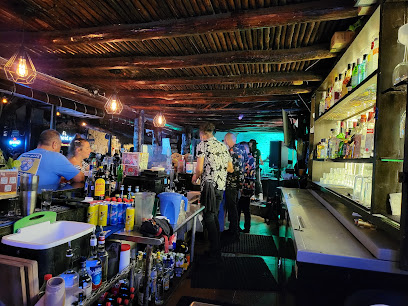
Coco Bongo
Experience the heart of Playa del Carmen's nightlife at Coco Bongo, a spectacular show and nightclub that guarantees an unforgettable evening of entertainment.

La Vaquita Playa Del Carmen
Experience the vibrant nightlife at La Vaquita Playa Del Carmen, a lively bar and nightclub with signature cocktails and an energetic atmosphere.

Bar Loco
Experience the vibrant energy and delicious grilled flavors at Bar Loco in Playa del Carmen, where locals and tourists come together for unforgettable moments.

No Name Bar
Discover the vibrant nightlife at No Name Bar – a lively pub and night club in Cozumel, perfect for drinks, food, and fun entertainment.
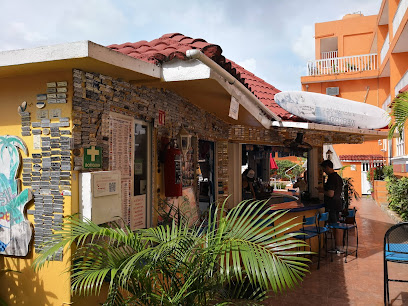
Patio 8
Discover the lively ambiance and delicious cocktails of Patio 8, a premier bar in Playa del Carmen that captures the essence of vibrant nightlife.

Deck 5 Pool and Skybar
Experience breathtaking views, exquisite cocktails, and a relaxing atmosphere at Deck 5 Pool and Skybar in Playa del Carmen.

Dick & Willy’s Calle 2 Y 5ta Avenida
Discover the vibrant nightlife at Dick & Willy's Bar in Playa del Carmen, known for unique cocktails and a lively atmosphere.

Social PubCrawl Playa del Carmen
Unleash your inner rock star at Social PubCrawl Playa del Carmen, the ultimate karaoke bar for unforgettable nights filled with music and fun.

Local Phrases
-
- HelloHola
[oh-lah] - GoodbyeAdiós
[ah-dee-ohs] - YesSí
[see] - NoNo
[noh] - Please/You're welcomePor favor/De nada
[por fah-vor/deh nah-dah] - Thank youGracias
[grah-see-ahs] - Excuse me/SorryPerdón/Lo siento
[pair-dohn/loh see-en-toh] - How are you?¿Cómo estás?
[koh-moh ehs-tahs] - Fine. And you?Bien. ¿Y tú?
[bee-ehn. ee too] - Do you speak English?¿Hablas inglés?
[ah-blahs een-glehs] - I don't understandNo entiendo
[noh ehn-tee-ehn-doh]
- HelloHola
-
- I'd like to see the menu, pleaseMe gustaría ver el menú, por favor
[meh goos-tah-ree-ah behr ehl meh-noo, por fah-vor] - I don't eat meatNo como carne
[noh koh-moh kahr-neh] - Cheers!¡Salud!
[sah-lood] - I would like to pay, pleaseMe gustaría pagar, por favor
[meh goos-tah-ree-ah pah-gahr, por fah-vor]
- I'd like to see the menu, pleaseMe gustaría ver el menú, por favor
-
- Help!¡Ayuda!
[ah-yoo-dah] - Go away!¡Vete!
[veh-teh] - Call the Police!¡Llama a la policía!
[yah-mah ah lah poh-lee-see-ah] - Call a doctor!¡Llama a un médico!
[yah-mah ah oon meh-dee-koh] - I'm lostEstoy perdido/a
[ehs-toy pair-dee-doh/pair-dee-dah] - I'm illEstoy enfermo/a
[ehs-toy ehn-fehr-moh/ehn-fehr-mah]
- Help!¡Ayuda!
-
- I'd like to buy...Me gustaría comprar...
[meh goos-tah-ree-ah kohm-prahr...] - I'm just lookingSólo estoy mirando
[soh-loh ehs-toy mee-rahn-doh] - How much is it?¿Cuánto cuesta?
[kwan-toh kwehs-tah] - That's too expensiveEso es demasiado caro
[eh-soh ehs deh-mah-see-ah-doh kah-roh] - Can you lower the price?¿Puedes bajar el precio?
[pweh-dehs bah-har ehl pree-syoh]
- I'd like to buy...Me gustaría comprar...
-
- What time is it?¿Qué hora es?
[keh oh-rah ehs] - It's one o'clockEs la una
[ehs lah oo-nah] - Half past (10)Media (10)
[meh-dee-ah (diez)] - MorningMañana
[mah-nyah-nah] - AfternoonTarde
[tahr-deh] - EveningNoche
[noh-cheh] - YesterdayAyer
[ah-yehr] - TodayHoy
[oy] - TomorrowMañana
[mah-nyah-nah] - 1Uno
[oo-noh] - 2Dos
[dohs] - 3Tres
[trehs] - 4Cuatro
[kwah-troh] - 5Cinco
[seen-koh] - 6Seis
[seys] - 7Siete
[syeh-teh] - 8Ocho
[oh-choh] - 9Nueve
[nweh-veh] - 10Diez
[dyehs]
- What time is it?¿Qué hora es?
-
- Where's a/the...?¿Dónde está un/el...?
[dohn-deh ehs-tah oon/ehl] - What's the address?¿Cuál es la dirección?
[kwahl ehs lah dee-rehk-syohn] - Can you show me (on the map)?¿Puedes mostrarme (en el mapa)?
[pweh-dehs mohs-trahr-meh (ehn ehl mah-pah)] - When's the next (bus)?¿Cuándo es el próximo (autobús)?
[kwan-doh ehs ehl prohk-see-moh (ow-toh-boos)] - A ticket (to ....)Un boleto (a ...)
[oon boh-leh-toh (ah ...)]
- Where's a/the...?¿Dónde está un/el...?
History of Playa del Carmen
-
Playa del Carmen was originally a small fishing village known as 'Xaman-Ha' among the ancient Maya. The area served as a crucial port for the trade route connecting Cozumel with the mainland. This strategic location facilitated commerce and cultural exchange, making it a significant site for the Maya civilization, which thrived in the region from around 250 to 900 AD.
-
With the arrival of Spanish explorers in the early 16th century, the indigenous population faced significant upheaval. The Spanish established control over the area, leading to dramatic changes in the local culture and society. The village of Playa del Carmen began to take shape, primarily serving as a transit point for the export of goods, particularly precious metals and agricultural products, to Europe.
-
By the late 19th century, Playa del Carmen began to evolve from a rural fishing village into a more structured community. The construction of a ferry service to Cozumel in the 1900s further enhanced its importance as a transportation hub. This development marked the beginning of increased tourism, as visitors sought access to the beautiful beaches and the vibrant marine life of Cozumel.
-
The late 20th century witnessed a significant transformation in Playa del Carmen, driven by the burgeoning tourism industry. The town's picturesque beaches and proximity to Cozumel attracted international visitors. The 1990s marked a period of rapid growth, with the development of hotels, restaurants, and recreational facilities catering to tourists, shaping Playa del Carmen into a prominent tourist destination.
-
Today, Playa del Carmen reflects a unique blend of ancient Mayan heritage and modern influences. The vibrant cultural scene is evident in local festivals, art, and cuisine, which showcase both traditional and contemporary elements. The town serves as a cultural crossroads, attracting a diverse population and fostering an atmosphere of inclusivity, making it a microcosm of the broader Yucatán Peninsula's rich historical tapestry.
Playa del Carmen Essentials
-
To reach Playa del Carmen, you can take a taxi or a minibus from other neighborhoods in Cozumel. The ferry from Cozumel to Playa del Carmen runs frequently and takes about 30 minutes. The ferry terminal in Cozumel is conveniently located near the main tourist areas. Once you arrive in Playa del Carmen, you can easily explore the area on foot or use local transport options.
-
Playa del Carmen is a walkable neighborhood, with many attractions located within walking distance. For longer distances, you can use local colectivos (shared vans), taxis, or rent a bicycle. Bicycles are available for rent at various shops, making it easy to explore the coastal paths and surrounding areas. A public bus service operates between Playa del Carmen and nearby towns.
-
Playa del Carmen is generally safe for tourists, but it is important to stay vigilant. Avoid walking alone at night in poorly lit areas, especially on the outskirts. Areas with higher crime rates include some less touristy parts of the city. Always keep an eye on your belongings and be cautious of your surroundings.
-
In case of an emergency, dial 911 for police, fire, or medical assistance. The local hospital is equipped to handle emergencies. Ensure you have travel insurance that covers health issues. There are also pharmacies in the area where you can get over-the-counter medications.
-
Fashion: Do dress appropriately for the beach and sun, but be mindful of local customs when visiting religious sites. Don't wear revealing clothing in such places. Religion: Do respect local customs and traditions. Public Transport: Do give up your seat for elderly passengers and be courteous. Don't eat or drink on public transport. Greetings: Do greet locals with a friendly smile and a handshake. Eating & Drinking: Do try local foods, but don't drink tap water; opt for bottled water instead.
-
To experience Playa del Carmen like a local, visit the bustling Avenida 5, where you can find street food vendors and local boutiques. Engage with local artisans and markets to buy handmade crafts. Attend local festivals and events, which offer a glimpse into the vibrant culture. For a unique experience, explore the cenotes nearby, which are natural sinkholes filled with clear water, perfect for swimming.
Nearby Cities to Playa del Carmen
-
Things To Do in Cozumel
-
Things To Do in Tulum
-
Things To Do in Cancun
-
Things To Do in Corozal Town
-
Things To Do in San Pedro
-
Things To Do in Orange Walk Town
-
Things To Do in Caye Caulker
-
Things To Do in Belize City
-
Things To Do in Campeche
-
Things To Do in Dangriga
-
Things To Do in Hopkins
-
Things To Do in San Ignacio
-
Things To Do in Tikal
-
Things To Do in Placencia
-
Things To Do in Roatán












